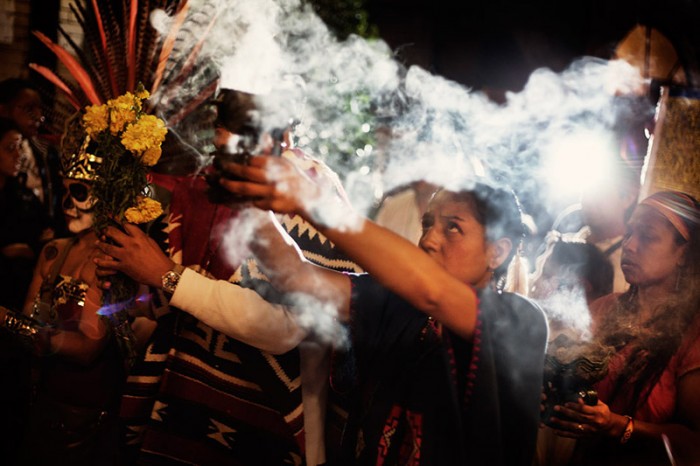
No, Día de los Muertos is not the same as Halloween.
So what is it, exactly?
Day of the Dead is a traditional Mexican holiday originating from the indigenous communities in Mesoamerica: Aztecs, Mayas, Purepechas, Nahuas, and Totonacas. (Yes, skull candies are based on the use of actual human trophy skulls in rituals).
Following the Spaniards’ arrival, the indigenous rituals were folded in to the Catholic religious calendar. The celebration has since followed Mexicans to the United States and other Latin American countries.
Traditionally, Día de los Muertos is celebrated after All Saints Day, by decorating, playing and making offerings to the deceased at the cemetery. It is believed that souls of children will come to earth on November 1, and those of adults on November 2.
But instead of being a mournful event, Día de los Muertos is spent playing and celebrating. You might see children running around the graves and eating some of the food left as offerings. The celebration can last all day, with many spending the night in the graveyard, as they wait for their loved ones’ spirits to come eat and celebrate!
Here are some of the main components of traditional Día de los Muertos celebrations:
Altars
For those not able to visit their departed loved ones in a cemetery, ofrendas, or altars, are erected and decorated in their memory. Photos of the deceased, as well as candles, figures of saints and offerings are placed at the altars.
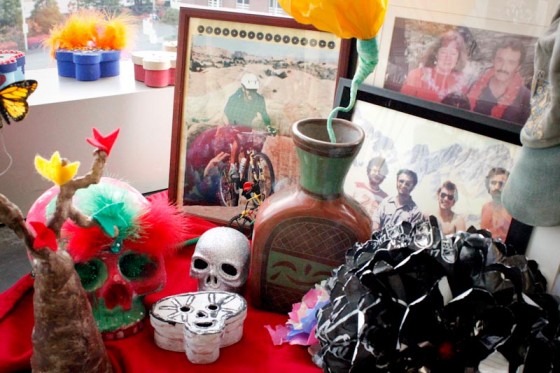
Offerings
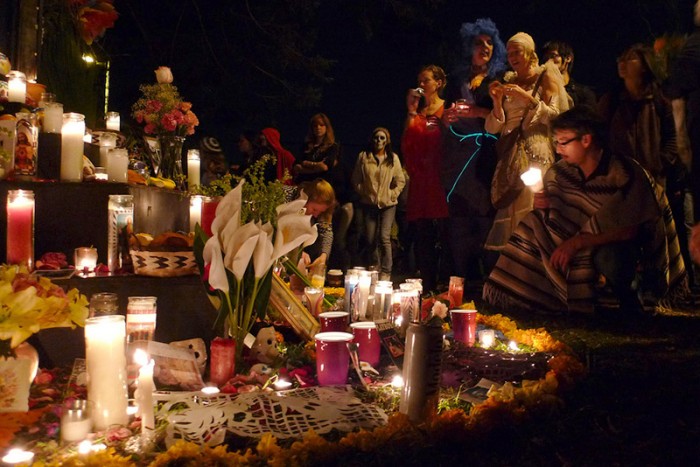
Elegant Skulls

Face-painting
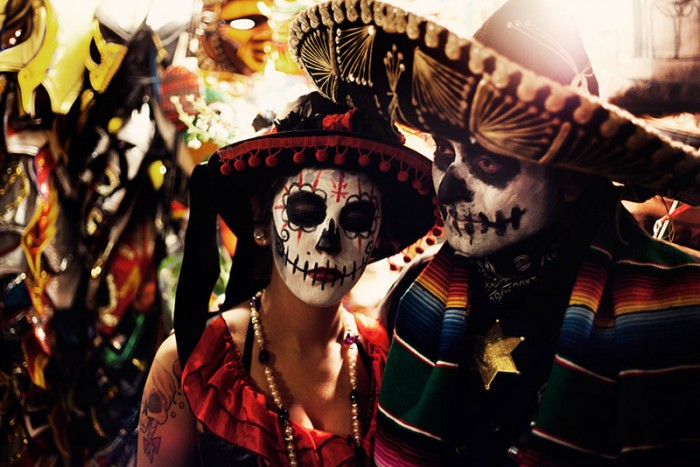
Aztec danza
As this is a traditional celebration, it is a great time to experience indigenous dance. Here’s a great example of an Aztec danza from Seattle’s Día de Muertos Celebration.
Tapete
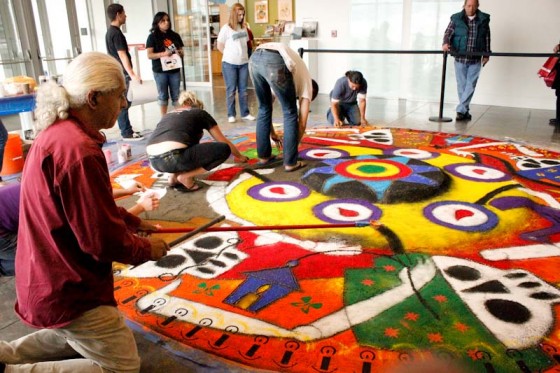
A time to reflect
Día de los Muertos has also been a time to reflect on tragedy, such as the many Mexican women who are victims of domestic violence, or the 43 students disappeared in Guerrero.
This year, El Centro de la Raza is reaching out and honoring the Black Lives Matter movement, in remembrance of those lost this year due to the systemic racism in the United States. This hints at the deeper meaning behind Día de los Muertos.
Opportunities to celebrate Día de los Muertos in Seattle this year:
Celebremos el Día de los Muertos – Seattle Public Library
October 24, 28, 29 & Nov 7, various times and branches
Día de los Muertos Burien Celebration
October 30 @ 6:00 pm – 9:00 pm
Día de los Muertos at Seattle Art Museum
October 30 @ 7:00 pm – 9:00 pm
Día de Muertos en Seattle 2015
October 31 @ 11:00 am – 7:00 pm, November 1st @ 11:00 am – 6:00 pm
Día de los Muertos Festival at Phinney Neighborhood Center
November 1 @ 4:00 pm – 7:00 pm
Tacoma Art Museum has celebrated Día de los Muertos for 11 years!
November 1 @ 10:00 am – 4:00 pm
Día de los Muertos at El Centro de la Raza
November 2 @ 5:30 pm – 8:30 pm
A Celebration of Souls: Day of the Dead in Southern Mexico – Burke Museum
September 30 – December 31

